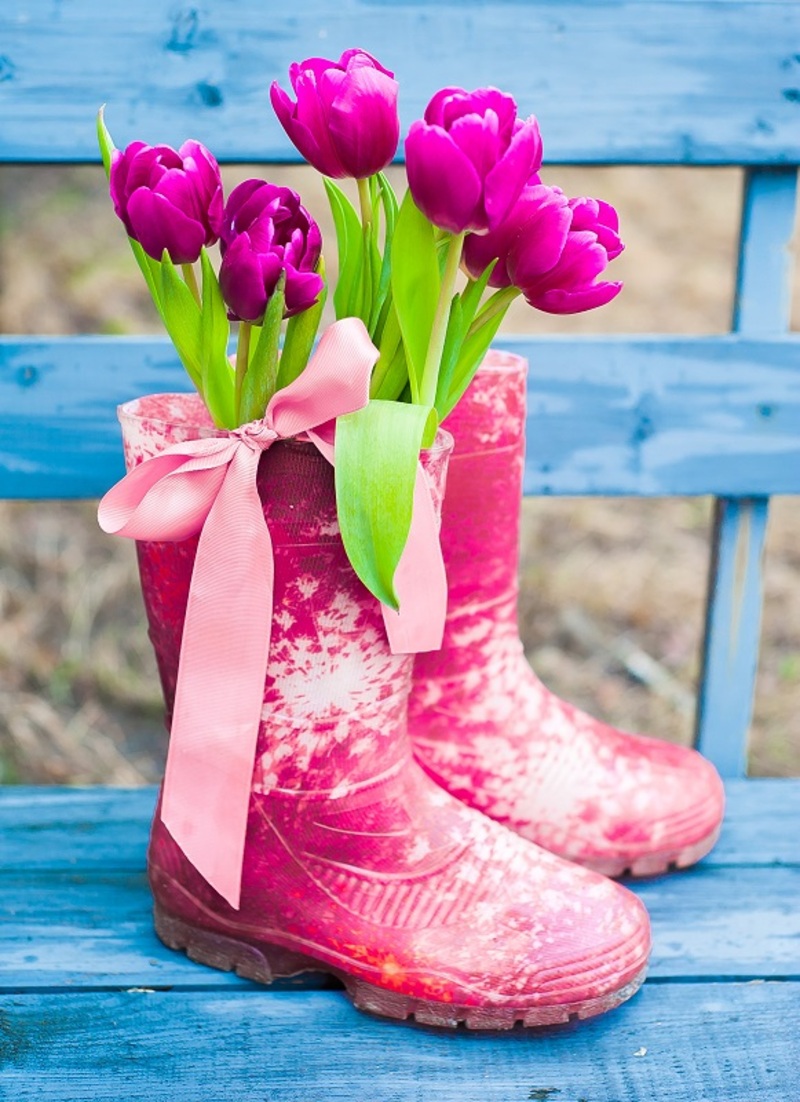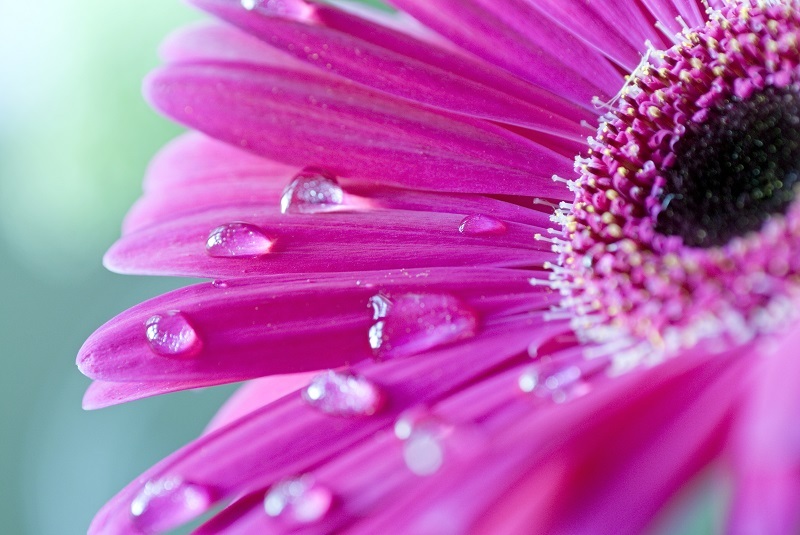The Complete Blueprint for Hydrangea Success
Posted on 01/07/2025
The Complete Blueprint for Hydrangea Success
Hydrangeas are among the most beloved flowering shrubs, known for their stunning, globe-like clusters of blooms and lush foliage. Whether you're a new gardener or an experienced plant enthusiast, cultivating these magnificent flowers in your garden can be a truly rewarding endeavor. This comprehensive guide will offer you everything you need to know to achieve hydrangea success--from selection and planting to care, troubleshooting, and creative design.
Understanding Hydrangea Varieties
Before embarking on your hydrangea journey, it is crucial to recognize the different types of hydrangeas available. Each offers unique characteristics, growth requirements, and bloom styles. Below are the most popular hydrangea species:
- Bigleaf hydrangea (Hydrangea macrophylla): Famous for their blue or pink mophead or lacecap blooms.
- Panicled hydrangea (Hydrangea paniculata): Recognized by cone-shaped white or pink panicles, tolerant of full sun.
- Smooth hydrangea (Hydrangea arborescens): Native to North America, with round, snowball-like flower clusters.
- Oakleaf hydrangea (Hydrangea quercifolia): Noted for their oak-like leaves and showy, elongated blossoms.
- Mountain hydrangea (Hydrangea serrata): More compact, with lacecap blooms, suitable for smaller spaces.
Choosing the right hydrangea type for your climate and landscape goals is the first step toward a thriving garden. Each species has specific requirements, so review individual needs before making your selection.

Choosing the Perfect Planting Site
A fundamental component of your hydrangea blueprint for success is selecting an optimal planting location. Consider the following site requirements for best results:
- Light: Most varieties prefer morning sun and afternoon shade. However, paniculatas and some oakleaf hydrangeas can tolerate more sun.
- Soil: Well-drained, fertile, and rich in organic matter.
- Moisture: Consistent moisture is vital--hydrangeas do not like to dry out.
- Space: Ensure ample spacing to allow each plant to reach its full size, preventing overcrowding and disease.
Pro Tip: Test your soil's drainage by digging a hole, filling it with water, and ensuring it drains within a few hours. Poor drainage can lead to root rot and diminished hydrangea performance.
Planting Hydrangeas: Step-By-Step Guide
The time spent getting your hydrangea started properly is the foundation upon which all future success is built. Follow these detailed steps:
- Choose the Right Time: Early spring or fall is best. Avoid planting in extreme heat or cold.
- Prepare the Planting Hole: Dig a hole twice as wide as the root ball and just as deep.
- Enrich the Soil: Amend planting area with compost or well-aged manure to boost nutrients.
- Remove the Hydrangea Carefully: Gently ease the plant from its container, loosen roots if tightly bound.
- Place and Backfill: Set the hydrangea at the same depth it was growing in the pot, backfill with soil, and pat gently.
- Water Thoroughly: Saturate the root zone to eliminate air pockets and support root establishment.
- Mulch: Apply 2-3 inches of organic mulch to retain moisture, regulate soil temperature, and discourage weeds.
Proper planting is essential for lifelong hydrangea success, ensuring your shrubs establish well and thrive for years.
Caring for Your Hydrangeas: Blueprint for Vigorous Growth
Consistent care is vital to hydrangea success. The following care guidelines are designed to promote lush growth and abundant, vibrant blooms:
Watering Needs
- Frequency: Hydrangeas require deep, regular watering--about 1 inch per week during growing season.
- Tip: Water at the base of the plant to keep foliage dry and prevent fungal diseases.
- If you live in a hot or dry region, supplemental irrigation may be necessary during summer heat waves.
Feeding Hydrangeas
- Application: Apply a balanced, slow-release fertilizer in spring as new growth appears.
- Repeat light feeding in early summer for maximum bloom production--avoid fertilizing after August to prepare plants for dormancy.
- Use fertilizers designed for acid-loving plants if targeting blue blooms.
Pruning for Health and Beauty
- Timing: When you prune depends on the hydrangea type. Prune bigleaf and oakleaf hydrangeas soon after flowering, as they bloom on old wood. Smooth and panicle hydrangeas bloom on new wood and can be pruned in late winter or early spring.
- Goals: Remove dead or diseased wood, thin out crowded stems, and shape plant for desired appearance.
- Do not cut back all hydrangea types at the same time--this can sacrifice the next season's blooms.
Mulching and Weed Control
- Benefits: Mulch conserves moisture, buffers soil temperature, and diminishes weed competition.
- Use organic mulches like pine bark, straw, or shredded leaves for best results.
How to Change Hydrangea Flower Color
One of the most enchanting aspects of certain hydrangea varieties (bigleaf hydrangea especially) is their ability to change color based on soil chemistry. Here's your complete blueprint for manipulating hydrangea hues:
- Blue Flowers: Acidic soils (pH below 6.0) yield blue blooms. Add aluminum sulfate to lower pH or use acidifying fertilizers.
- Pink Flowers: Alkaline soils (pH above 7.0) result in pink flowers. Add garden lime to raise pH and restrict aluminum availability.
- Purple Hues: Intermediate pH (6.0 - 7.0) often produces lavender to purple shades.
Note: Changes in color will only affect bigleaf or mountain hydrangeas--not other species. Adjust soil chemistry gradually and test with a pH meter for optimal results.
Troubleshooting Common Hydrangea Problems
Even with the best care, issues can sometimes arise. A critical aspect of your hydrangea blueprint for success is recognizing and remedying problems early:
Wilted Leaves
- Possible Causes: Underwatering, overwatering, heat stress, or root rot.
- Solution: Assess soil moisture levels, improve drainage, and provide afternoon shade if needed.
Failure to Bloom
- Possible Causes: Pruning at the wrong time, severe cold damage, excessive nitrogen, or deep shade.
- Check your pruning timing, shelter from winter winds, and ensure proper sunlight exposure.
Pests and Diseases
- Hydrangeas are relatively pest-free but can suffer from aphids, spider mites, or leaf spots.
- Monitor regularly, practice good sanitation, and treat with insecticidal soap or neem oil if infestations occur.
- Fungal issues like powdery mildew can be minimized by ensuring good airflow and watering at the soil level.
Designing with Hydrangeas: Creative Landscape Ideas
Hydrangeas are endlessly versatile and can be used in numerous landscape designs. Explore these inspiring ways to incorporate hydrangea bushes into your outdoor spaces:
- Mass Planting: Make a statement with bold drifts of hydrangeas for spectacular color displays.
- Mixed Borders: Combine hydrangeas with perennials, ornamental grasses, and shrubs for season-long interest.
- Foundation Plantings: Position hydrangeas along house foundations for cottage garden charm.
- Specimen Plants: Showcase a single hydrangea as a focal point in a lawn or courtyard.
- Containers: Compact varieties thrive in pots on patios, porches, and even balconies.
Hydrangea Companions for a Lush Look
- Hostas for lush, textural contrast beneath hydrangeas.
- Ferns add airy, woodland elegance to shade gardens with hydrangeas.
- Astilbe, foxglove, and coral bells provide blooms and foliage that harmonize with hydrangea flowers.
Hydrangea Success Throughout the Seasons
Caring for your hydrangeas year-round guarantees stunning performance and longevity. Here's how to support your shrubs in every season:
Spring
- Feed hydrangeas with a balanced fertilizer as growth resumes.
- Mulch to suppress weeds and conserve moisture as soil warms.
- Prune as appropriate based on variety.
Summer
- Water deeply, especially during dry spells.
- Deadhead spent blossoms for a tidy look (except for varieties prized for winter interest).
- Monitor for pests and diseases.
Fall
- Cease fertilization to prevent tender new growth.
- Leave blossoms intact on varieties that add winter interest.
- Begin reducing watering as temperatures drop.
Winter
- Add a thick mulch layer to protect roots in cold climates.
- Shield roots from freeze-thaw cycles using straw, leaves, or pine needles.
- Do not prune in winter unless removing dead or damaged wood.

Frequently Asked Questions about Hydrangea Success
How fast do hydrangeas grow?
Growth rates vary by species and conditions. Most hydrangeas add 1-2 feet in height per year if given proper care. Paniculata and smooth hydrangeas are especially vigorous growers.
Should I deadhead hydrangeas?
Deadheading can tidy appearance and occasionally stimulate new blooms. For varieties like paniculata and bigleaf hydrangeas, remove spent blossoms after they fade. For types with ornamental winter heads, leave them for off-season interest.
How long do hydrangeas live?
With appropriate care, hydrangeas can thrive for decades, becoming more beautiful and productive as they mature.
Your Blueprint to Hydrangea Mastery
By following this complete hydrangea blueprint--from variety selection and planting to year-round maintenance and creative design--you are unlocking the full potential of these extraordinary shrubs. Embrace the joy of experimenting with flower colors, the pleasure of nurturing vigorous growth, and the satisfaction of a garden brimming with spectacular blooms.
In summary, hydrangea success is within your reach--just follow these expert tips, tend your plants with care, and watch as your garden transforms into a breathtaking floral oasis.
If you apply the methods outlined in this blueprint, you'll soon enjoy show-stopping hydrangea displays that thrive for years to come.
Latest Posts
Elevate Poinsettia Longevity with Thoughtful Care
Celebrate the meanings behind your birth month flowers
The Complete Blueprint for Hydrangea Success
Floral Mirror: Which Bloom is the True Reflection of Your Personality







